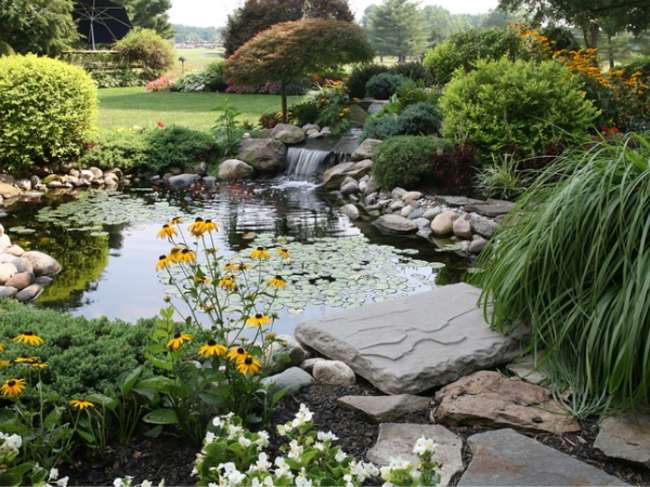

We may earn revenue from the products available on this page and participate in affiliate programs. Learn More ›
Pond Waterfall Benefits
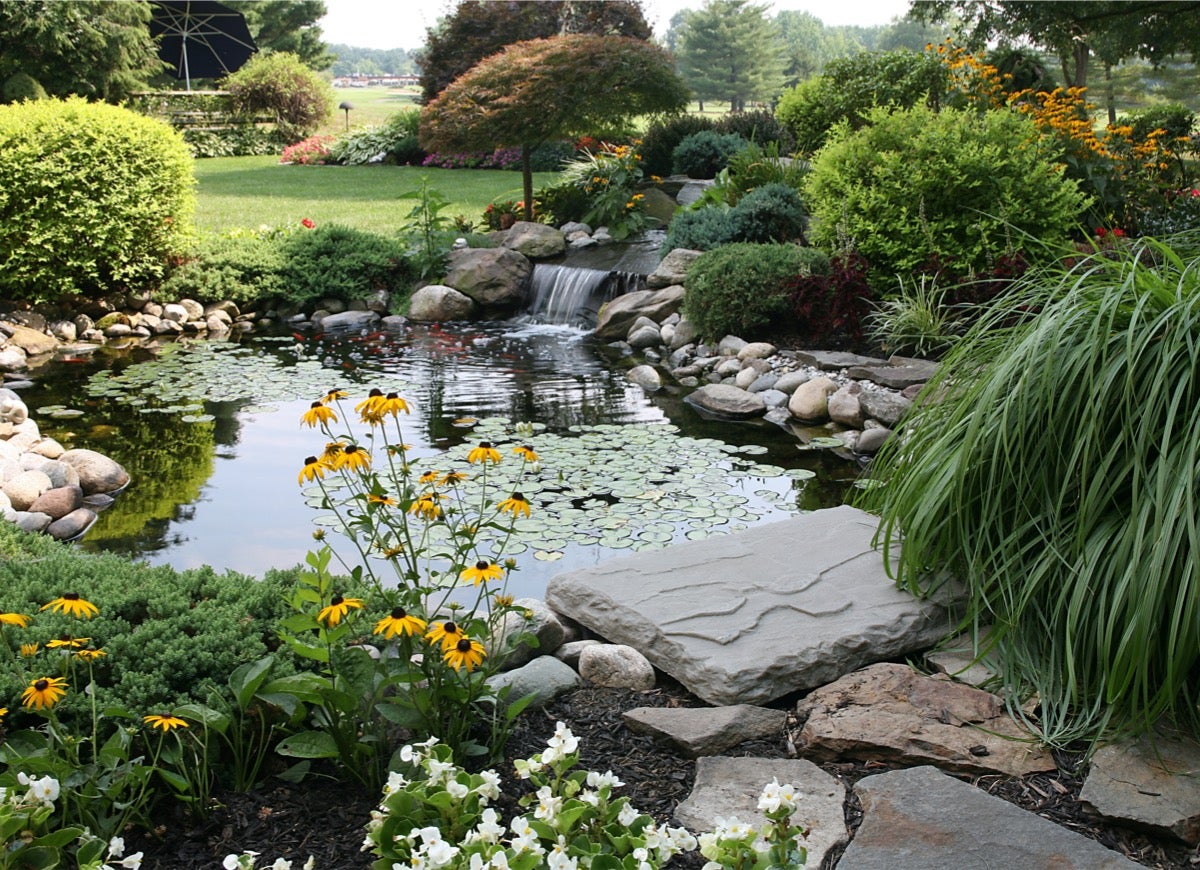
Outdoor water features are both calming and visually appealing, plus they offer a number of practical advantages. They attract wildlife to the area, provide a natural cooling effect on hot days, and can potentially add value to your home.
Adding a waterfall to a pond increases the sensory experience with the soothing sound of rushing water, which will drown out traffic or other noise and help you relax. Read on for nine ideas to inspire your backyard pond waterfall.
Stone Pond With Lily Pads
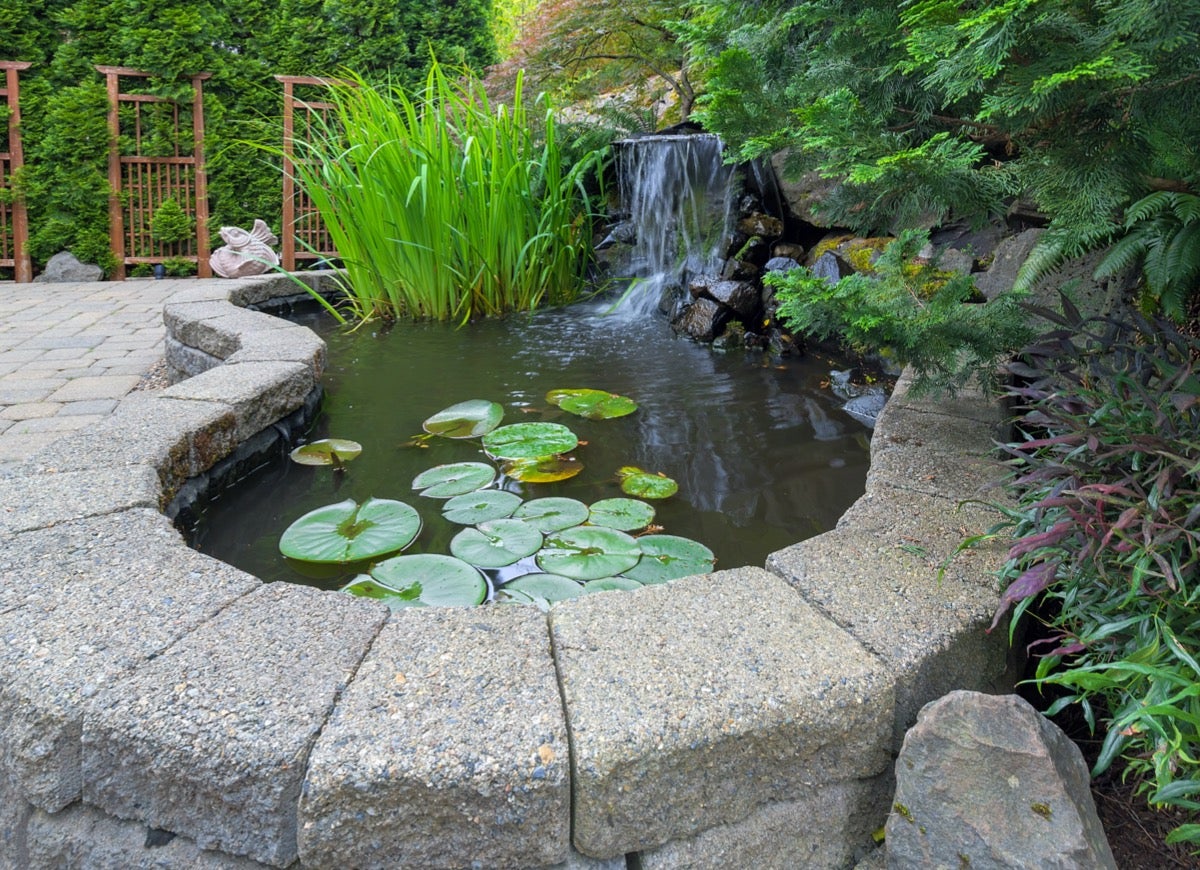
This pretty pond is filled with water lilies and features a stone surround and a subtle waterfall. Lily pads encourage wildlife to visit your pond and shelter fish from the sun on hot days. They also prevent algae from growing, keeping the pond’s water looking clear. Water lilies can thrive in USDA plant hardiness zones 3 through 12.
Natural Landscaping
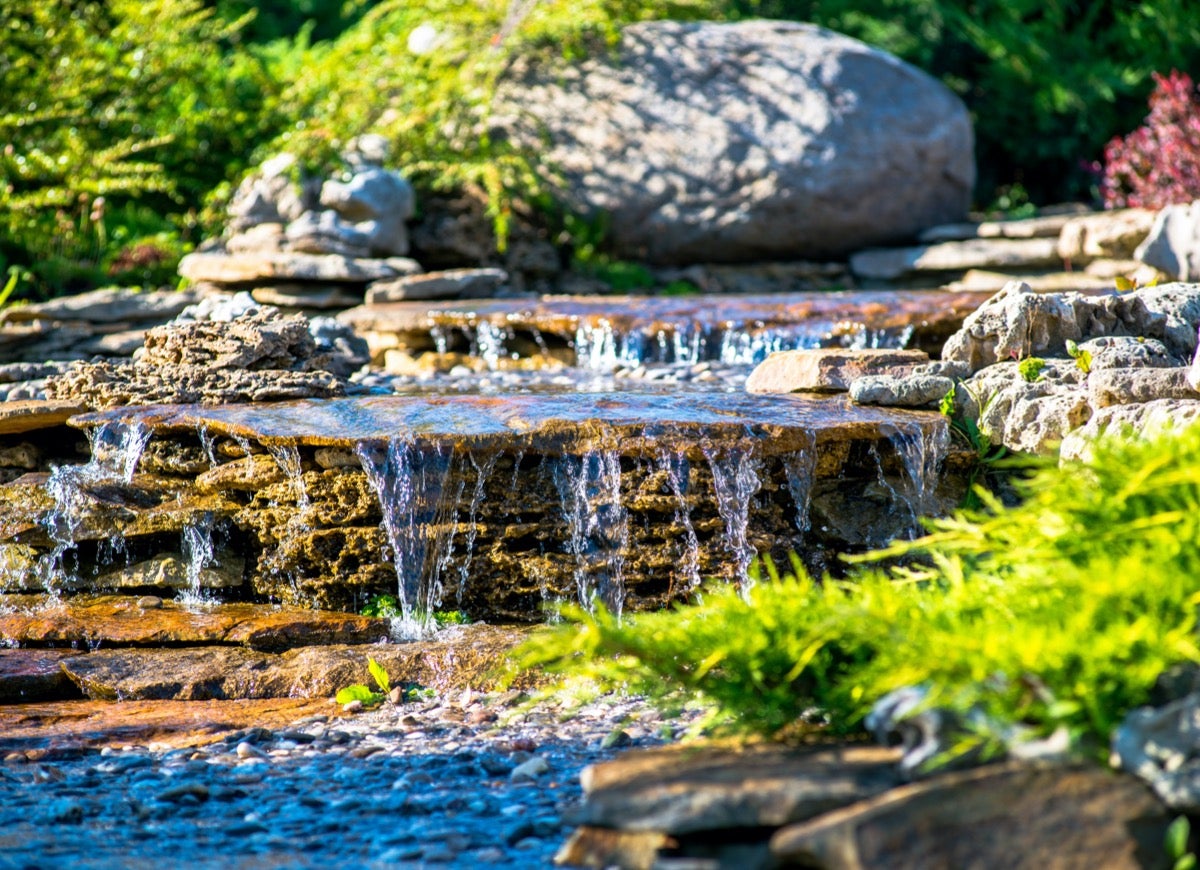
Bring the wilderness into your own backyard by opting for a natural landscaping style that is meant to evoke a real babbling brook. Achieve this effect by incorporating curved lines and asymmetrical design to avoid an overly curated look. Add native plants and flowers to the surrounding area to bring in extra greenery.
Spout Waterfall
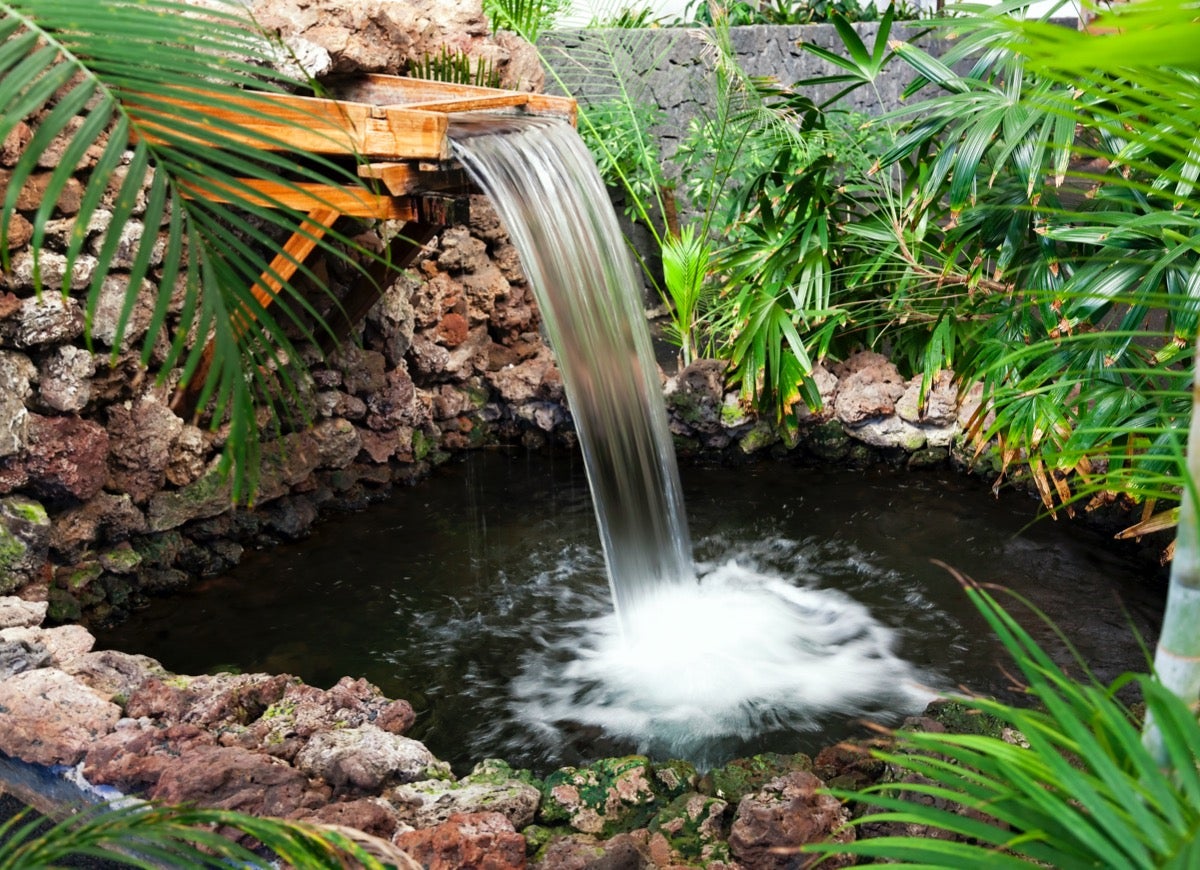
A wooden spout waterfall like this one adds a rustic element to any outdoor space. It causes the water to cascade into the pond, creating relaxing ambient noise that provides the perfect backdrop to time spent in your yard. Building your own wooden spout waterfall is an achievable project for an experienced DIYer.
Rock Waterfall Pond
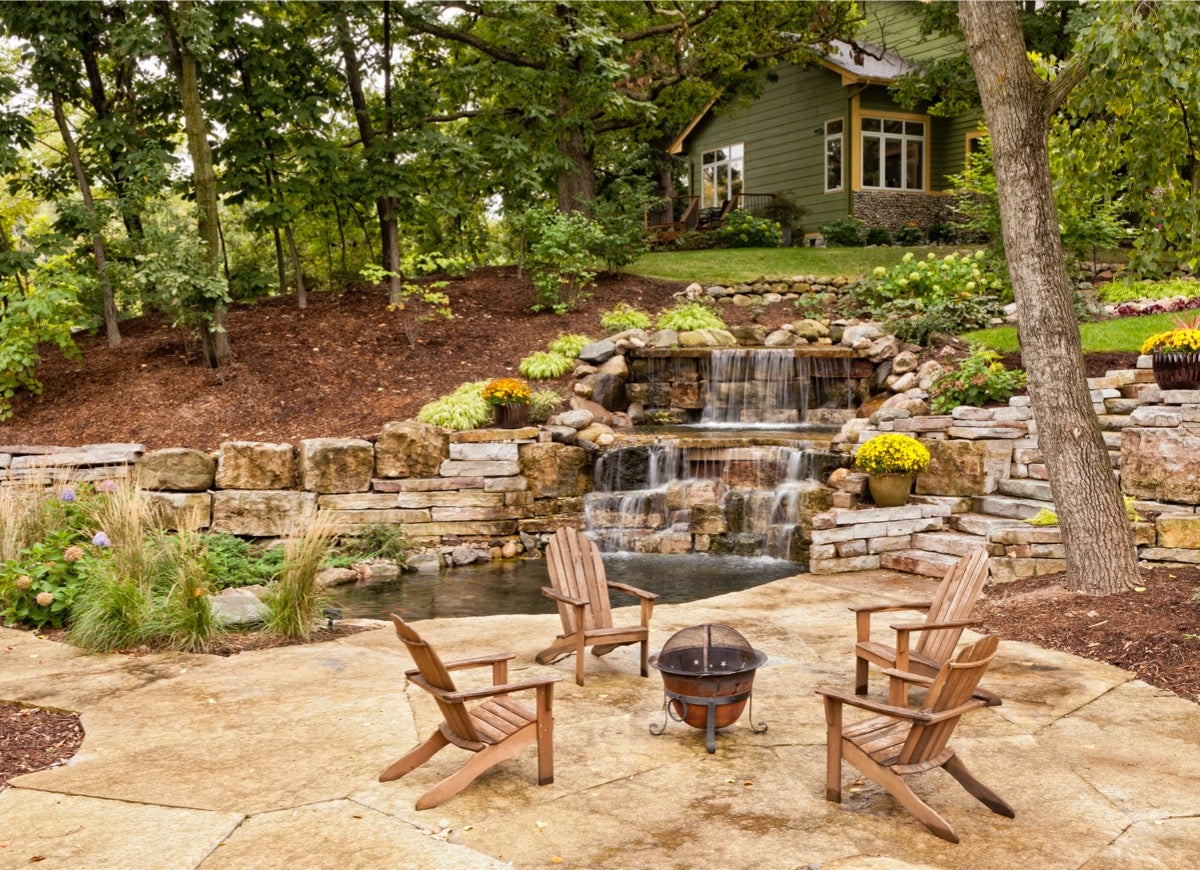
Those who don’t want the commitment of a backyard pool but enjoy looking at a substantial body of water should consider installing a large pond with a cascading waterfall like this one. The monochromatic look of the rocks and patio stone create an organic effect that will make you feel as though you’ve been transported to a peaceful forest.
Related: 10 Water Features to Make Any Backyard Landscape Complete
Botanical Garden
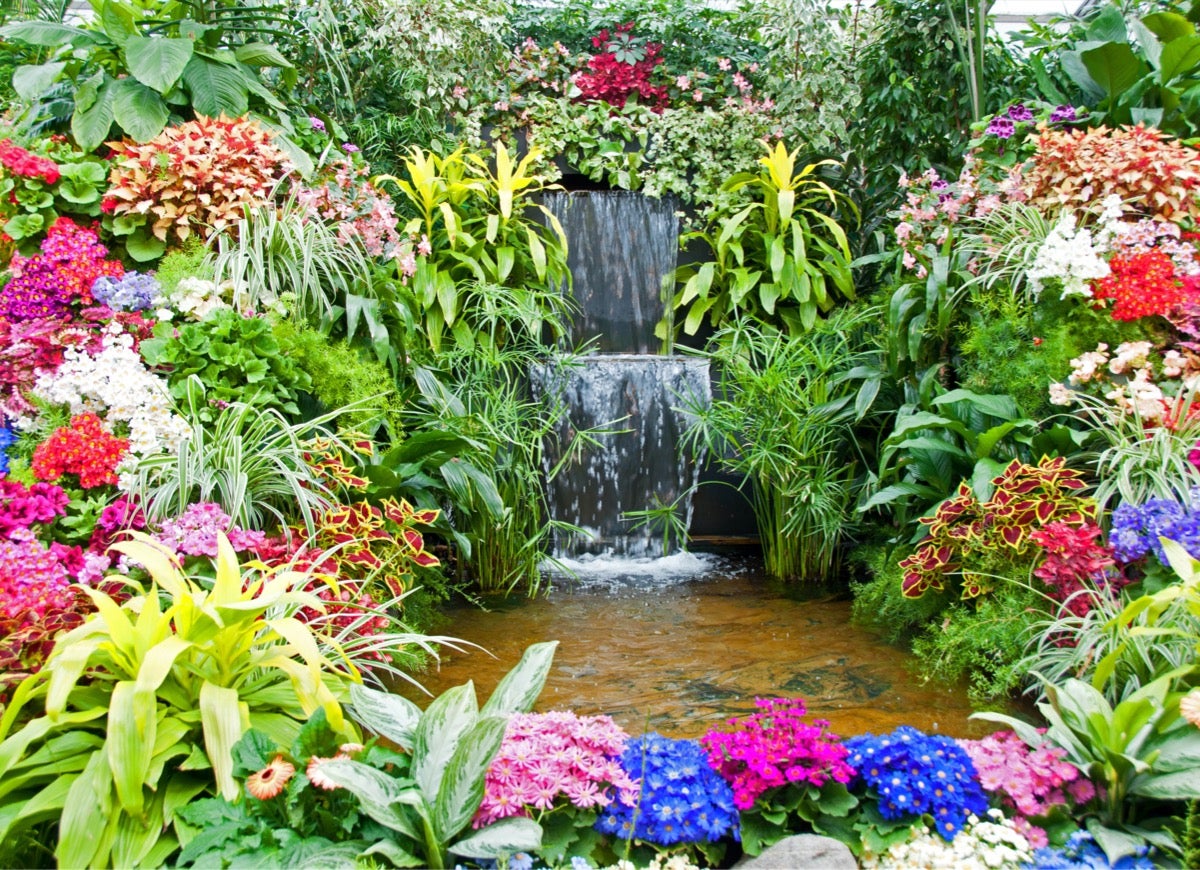
Turn your yard into a botanical garden by surrounding your pond and waterfall with colorful blooms. When choosing flowers to place around your pond, consider whether they frequently drop leaves or buds and whether their root systems are compatible with the soil. Some of the best flowers for pond surrounds are daylilies, irises, meadow sage, ornamental grasses, and windflowers.
Tree Trunk Fountain
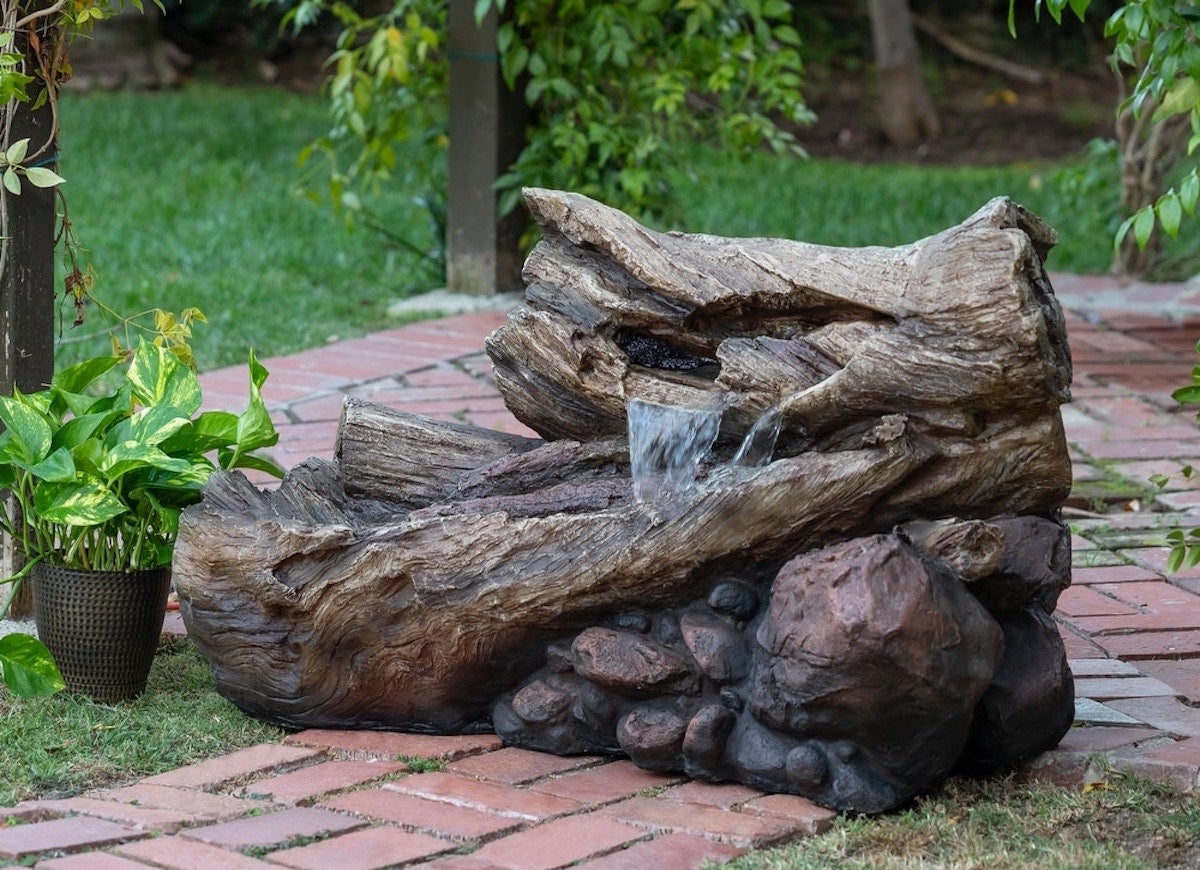
A fountain like this one (available on Overstock) can be placed beside an existing pond to create a more dynamic water feature. The 2-tiered design is meant to look like fallen tree trunks for a natural forest aesthetic. It’s completely self-contained, so it simply needs to be filled and attached to a power source.
Koi Pond Waterfall

What’s more delightful than a pond full of beautiful koi fish? This version features a rocky waterfall and has plenty of room for the fish to grow and thrive. When properly cared for, koi fish can reach up to 4 feet long! Koi fish are social creatures and enjoy living with other fish, no matter the species.
LED Rock Fountain
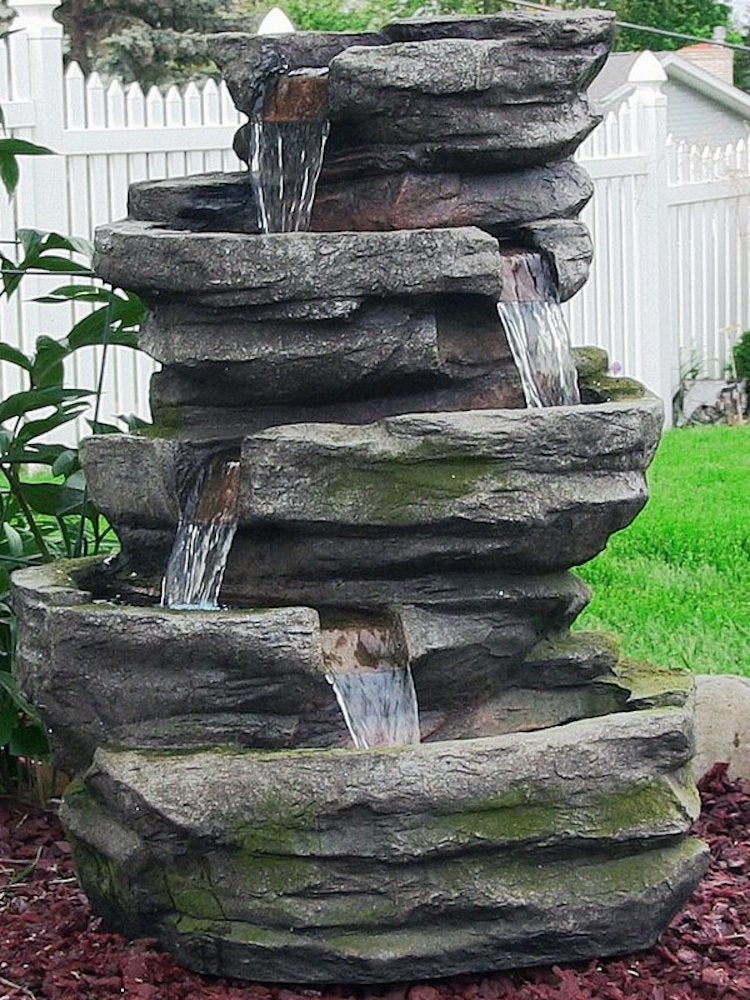
Add a soothing waterfall to your property without undertaking a major landscaping project by purchasing a tiered fountain like this one (available from Wayfair). With a durable polyresin and fiberglass construction and LED lights to accent the piece, this fountain would make an excellent addition to an existing pond. It has an adjustable flow rate and a capacity of 5 gallons.
Peaceful Goldfish Pond
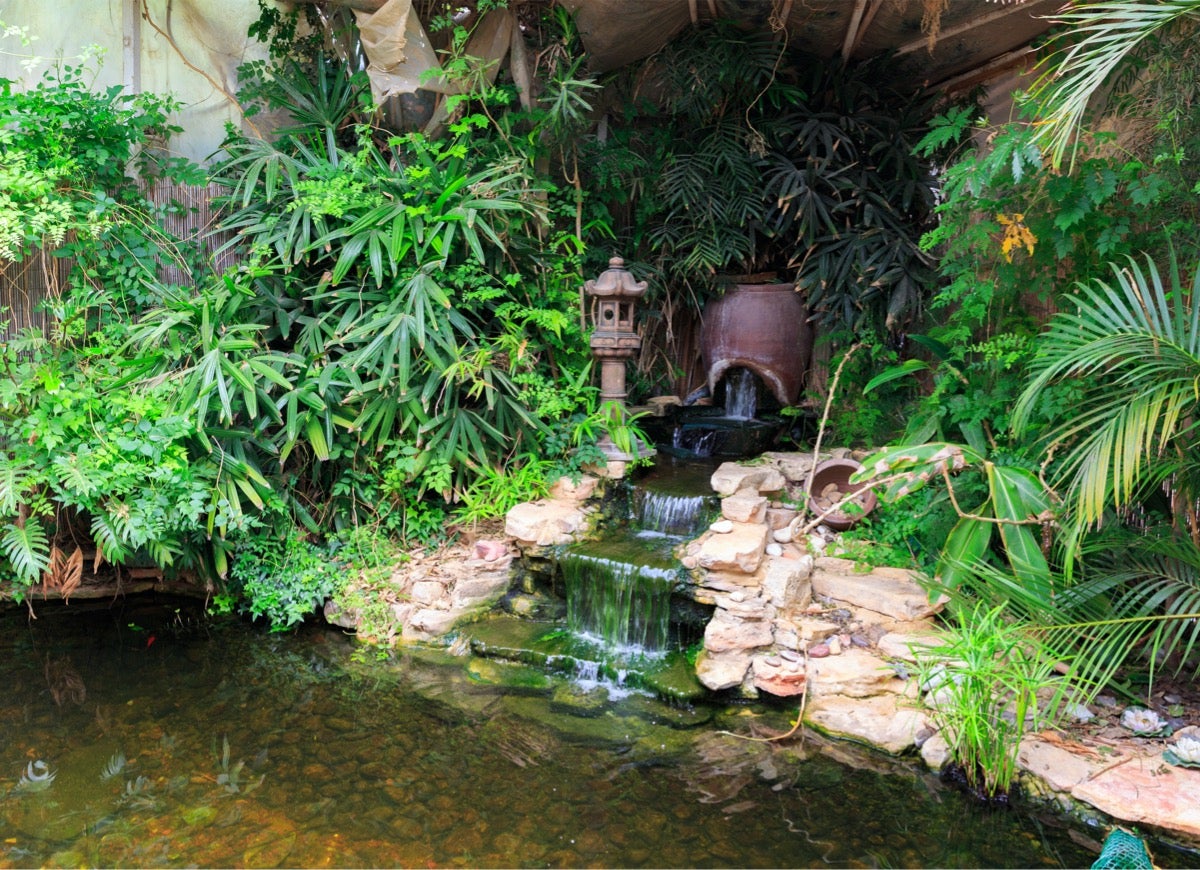
This pretty pond is surrounded by lush greenery, creating a tropical aesthetic that will make you feel like you’re on vacation. It’s filled with goldfish, which are fun to observe for children and adults alike. To create the ideal environment for goldfish to thrive, be sure to install an adequate filtration system and ensure the fish have access to a food source.
Related: 11 Zen Garden Ideas to Bring Peace and Relaxation to Your Outdoor Space
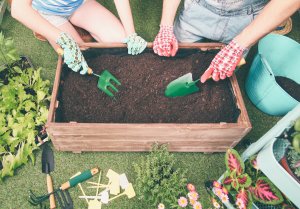
Our Best Advice for Beginner Gardeners
We’ll help you set up your first garden—whether that’s a few pots on your patio, a raised bed, or an in-ground plot out back—and select the right plants for your soil and region.